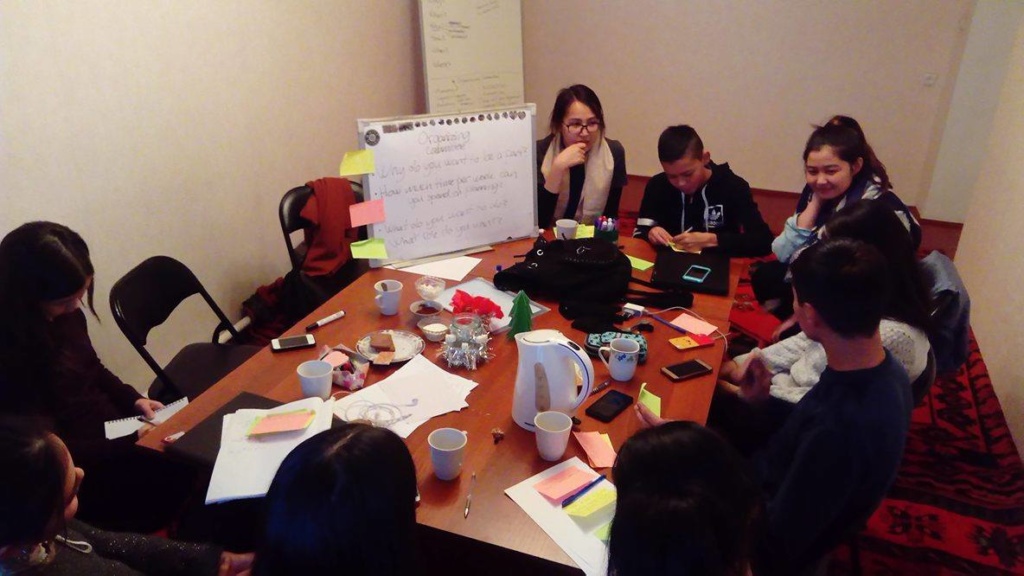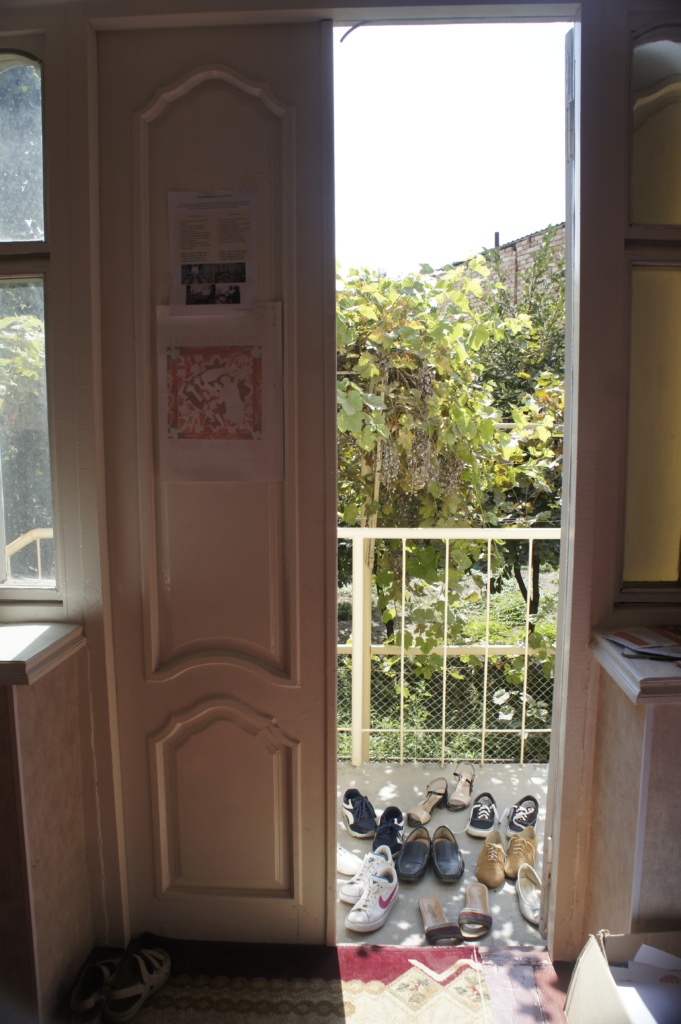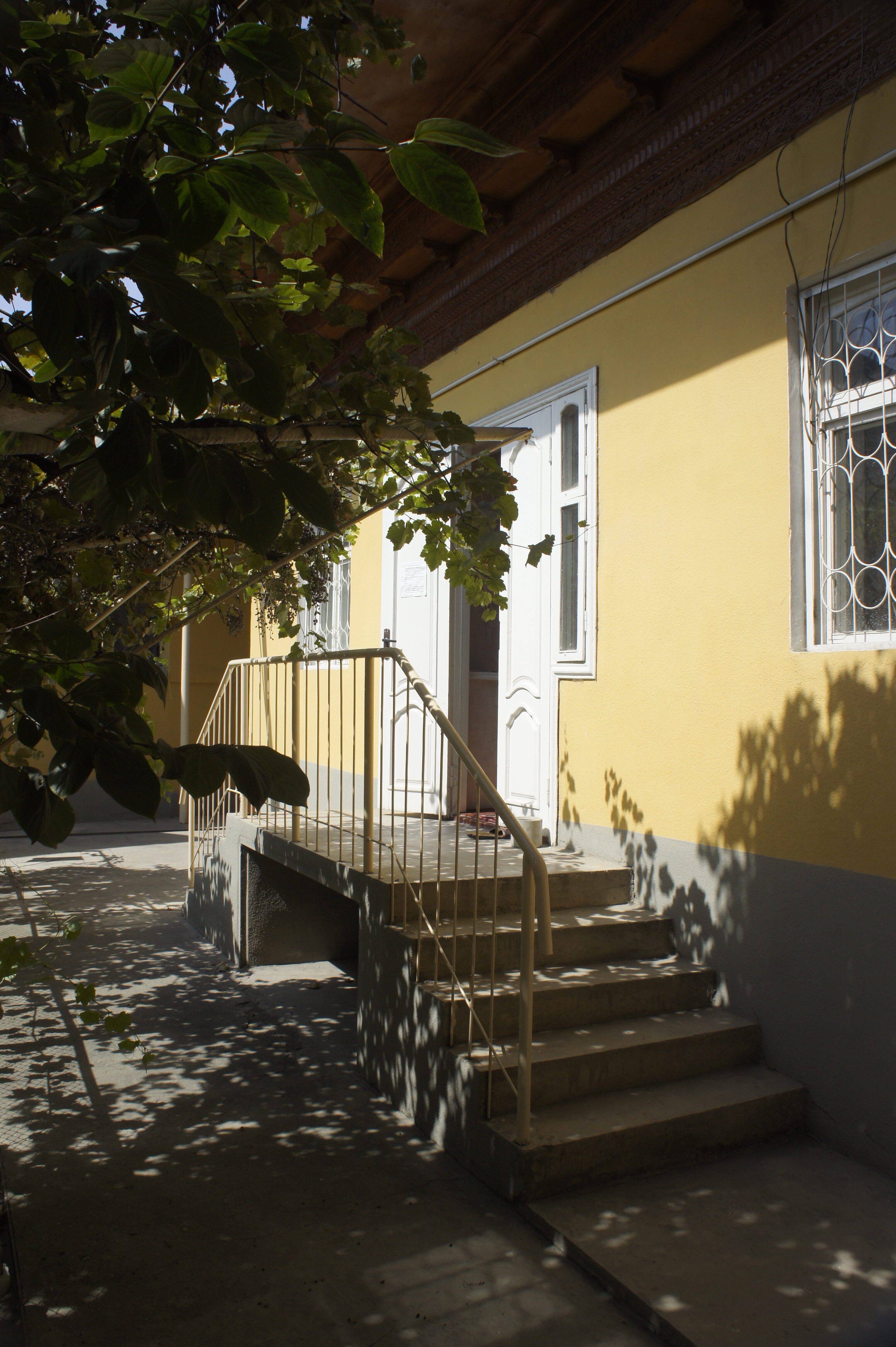- How can Novi Ritm be seen as contributing to the democratization process of Kyrgyzstan?
In the last blog post, Perspectives on Democracy, I offered different conceptions of democracy and how the Central Asia Solidarity Groups (hereby abbreviated CAG) in particular understands the concepts of “democracy” and “democratization”. In this second and last blog post in the mini series, we will delve deeper into what actions CAG’s understanding of democracy and democratization leads them to take in Central Asia by analyzing how one of their main partners, the youth organization Novi Ritm in Osh, Kyrgyzstan, can be said to contribute to democracy.
First of all, let us lay out the scene. The context in which Novi Ritm operates consists of the second largest city in Kyrgyzstan, Osh, located in the south. The city is renowned as one of Central Asia’s epicentres of Islamic activism, political instability, and as a focus of international development aid. In 2010, it once again became the site of inter-ethnic violence that killed hundreds of people (Kirmse; 2010).
Novi Ritm disposes a house which serves as both an office and activity center in one of the central neighbourhoods of Osh. It is a youth organization with the motto “By youth, for youth” offering informal learning opportunities and a platform for young people to meet and to develop their own ideas within the fields of human rights, gender equality, the environment and conflict prevention. According to Kirmse (2009b), international donors have created an array of “youth spaces” in Kyrgyzstan. Both CAG and Novi Ritm would argue that the uniqueness of Novi Ritm is the fact that it is youth-run, non-hierarchical and allow youth themselves to claim their own space and to be seen and heard within the organization as something more than just passive participants. This stands in contrast to many other youth organizations in Kyrgyzstan where there is a lack of active and meaningful contributions by youth themselves since the organizational structures are hierarchical and rigid, and where youth are seen as passive receivers of projects as numbers in the statistics when reporting back to donors.
By the time of writing, the vision, goal and mission on the organization is being revised but below is the current mission of the organization (which will not be that much changed):
Our mission is to create social meeting places for young people, and to encourage them to develop their own ideas and initiatives. By working with people from different backgrounds, we form an inclusive and vibrant civil society. We offer youth the tools and possibilities to critically analyze and identify issues that matter to them and people in their surroundings. By empowering them, and by encouraging their social engagement, we want to change the structures in society that underpin inequalities and injustices that are holding back an inclusive, equal and sustainable world.”

We will now use the lense of the different perspectives on democracy – formal, participatory, social democratic, performative and deliberative – to see how Novi Ritm can be said to improve the quality of democracy. Already now, we can however rule out the social democratic conception of democracy, since Novi Ritm does not at all operate in the economic or redistributive sphere.
Novi Ritm’s contribution to democracy seen through the perspective of the formal conception of democracy
Diamond (1994, cited in Grugel 2002, p. 94) makes seven liberal arguments of civil society’s democratic role. These are very much in line with the formal conception of democracy since they are often connected to civil society as the watch-dog that is supposed to keep the government in line. Let’s see how and to what extent Novi Ritm can be said to live up to the following:
- Firstly, the claim that civil society foster democratic awareness and skills
- Secondly, that civil society balances state power
- Thirdly, that it generates opportunities to participate in local levels of governance
- Fourthly, that it helps to recruit political leaders
- Fifthly, that it cuts across sectional interests and mitigates political conflict
- Sixthly, that it creates channels other than political parties to articulate political interests
- Seventhly, that it is suppose to lower the burdens and demands placed upon the state
For number 1. civil society fostering democratic awareness and skills, Novi Ritm certainly contributes by offering a platform for young people where the ideals of democracy are held high and where youth themselves are seen as capable individuals, entrusted with responsibilities and power. There is a heavy focus on youth’s own participation, common-decision making and letting youth’s own voices be heard. In this way, the organization tries to practice democracy on the small scale everyday and tries to foster active citizens for the larger scale too. It would however be too much to say that this leads to that Novi Ritm at this point has the possibility to 2. balance state power.
Regarding number 3. generating opportunities to participate in local levels of governance, it can be said that Novi Ritm tries to reach out to local governmental bodies to include them in their activities etc but this does not always work out. The plans for the future are to step up this work for Novi Ritm in order to let youth have a bigger say in local government.
Concerning number 4. recruiting political leaders, the Chair Person of Novi Ritm, Ainagul Amatbekova, has explicitly stated that “In youth, we see the potential leaders of Kyrgyzstan”. At Novi Ritm, youth develop awareness about issues central to the young Kyrgyzstani democracy, tools to tackle them and the leadership skills needed to make a change. Therefore, I would argue that Novi Ritm has potential to actually bring up future political leaders and civic activists.
Whether Novi Ritm 5. cuts through sectional interests and mitigates political conflict depends on how successful they are in including people from different backgrounds, as they state they want to according to their mission. So far, the pool of youth active in Novi Ritm is more or less belonging to the same social group. Most of them are for example Kyrgyz and unfortunately, the minority groups such as Uzbek, Tartar, Uighur and Russian are not really present at the moment. Viewing the modern history of Kyrgyzstan and Osh in particular, it would be highly desirable to mitigate political conflict based on ethnicity and making youth meet over ethnic boundaries would be a terrific way of doing so. Novi Ritm has potential in this regard that could be better used. It is satisfying to notice that recently, work has been done at the organization to try to recruit out of the normal tracks to increase diversity in the organization.
Does Novi Ritm 6. create channels other than political parties to articulate political interests? I would argue a weak yes to this question. At Novi Ritm, there is however a view that the organization operates in the sphere of “social issues” rather than in “political issues”. This might be because issues connected to human rights, gender equality, the environment and conflict not necessarily have to do with politics if politics are conceived as the business and power struggle of persons in parliament and in government. As I have understood politics in Kyrgyzstan (for example through my discussion with Aida Bektasheva who is working for the organization called “Coalition for democracy and civil society”), it is a highly person-centered approach and not so much about ideology and actual issues. Personally, I would however say that for example teaching youth how to express themselves and visualize the problems they experience in Kyrgyz society related to gender norms, gender inequality and for example bride kidnapping through comics is a, though indirect way, of articulating a political interest – the interest of having gender equality be taken seriously. At this point, these kind of expressions are not especially directed to where political decisions are taken but at most to a general public, but it still offers some kind of channel for semi-political grievances. Therefore, I am answering a weak yes to number 6.
According to number 7., civil society is supposed to lower the burdens and demands placed upon the state. Novi Ritm offers informal learning opportunities through discussion-based education cycles in for example women’s rights, the environment, conflict prevention, English, debating, comics creation and health. As it is now, it functions as a complement to the formal education offered by schools and universities (governmental institutions), that do not always encourage youth’s own initiatives and critical thinking skills, especially not in the sphere of human rights and sub-topics affiliated with them. Novi Ritm’s activities cannot and should not however replace the official educational system or excuse it from it’s sometimes poor quality.
Concludingly, Novi Ritm does contribute to democratization according to many of the arguments of how civil society might help democratize a political entity put forward by Diamond.
Novi Ritm’s contribution to democracy seen through the perspective of the participatory conception of democracy
As we saw in the last blog post, for advocates of a conception of democracy that stresses the broad and equal participation of all groups of society, it is not enough that everyone formally has the possibility of having a say in political processes. Groups that are systematically underprivileged will in reality have a smaller chance of being heard. Novi Ritm is trying to strengthen groups that are otherwise often overseen in Kyrgyz society, such as youth generally and girls and young women in particular who often are suppressed due to structures of ageism and sexism. As an example of this, Kirmse (2010) has for example stated that “Of all the constraints on young people’s activities and life options, however, gender differences often seem the least negotiable”.
In Novi Ritm’s mission, we find: “By working with people from different backgrounds, we form an inclusive and vibrant civil society” and also “we want to change the structures in society that underpin inequalities and injustices that are holding back an inclusive, equal and sustainable world”, statements and directions very much in line with the participatory conception of democracy. However, again, I would like to highlight that even though Novi Ritm successfully activates youth and especially girls and young women, they tend to come from the majority ethnic group and also from the more well-educated segments of society. In many ways, they are still more privileged than members of minority communities and people who are not in the best schools in Osh or in university. If Novi Ritm would reach out to other groups in a more effective way, it would be a truly dynamic force for strengthening and giving a voice for underprivileged groups so that they could make social and political claims which would develop democracy.
Novi Ritm’s contribution to democracy seen through the perspective of the performative conception of democracy
From the last blog post, it stands clear that CAG’s view on democracy is closely linked to performativity theory. To remind you of what it means, here is what was written about how this in the last blogpost:
Applying performativity theory to democracy means that the methods that aim at creating democracy in society as a whole should be of democratic nature even in its small format. This is what creates democracy. Making democratic acts in everyday life, for example having a round during a meeting to let everyone have a say on the matter discussed, is how we create democracy continuously.
In Novi Ritm, democratic forms of organising everyday work are tried to be implemented to continuously live by the example the organization would like to see in society as a whole. For example, a democratic form of having meetings, where everyone participating in the meeting is assigned a certain role and responsibility (for example, meeting facilitator, secretary, timekeeper, power intervener etc) is practiced at the weekly office meeting and recurring meetings the volunteer coordinator holds with volunteers. This is to make everyone active, to mitigate informal power structures and allow everyone to have a say on equal terms. This is an attempt to democratize the organization in itself, in line with performative view on democracy. However, the everyday operations seem to be too pressing to fully prioritize performing these “rituals” and models and they are, from my perspective, not fully used and lived by. In conclusion, there is an abstract will of the organization to run the organization in a democratic manner, but it is not translated into real practice.
Novi Ritm’s contribution to democracy seen through the perspective of the deliberative conception of democracy
In deliberative democracy, democracy is seen as the process, not the results. The focus is on bringing people together for deliberation, dialogue, and to create contexts where people can learn from each other. I would argue that this is exactly what Novi Ritm does. They do it by offering a physical house where youth can meet over issues connected to social development and where youth learn from each other rather than from an adult professional coming to teach them about different topics. In the mission, the introductory sentence is even “Our mission is to create social meeting places for young people”. Moreover, it reads: “We offer youth the tools and possibilities to critically analyze and identify issues that matter to them and people in their surroundings”. Novi Ritm facilitates in this way the conversation that makes people aware of problems characterizing their communities and try to spark dialogue amongst youth to make themselves see, discuss and solve local problematics.

I would argue that the clearest example of how Novi Ritm contributes to democracy is found in terms of this deliberative model where people are encouraged to come together to talk their way out of problems and find common solutions.
References:
Grugel, Jean (2002) Democratization A critical introduction. Hampshire: Palgrave Macmillan
Kirmse, Stefan B (2010) In the marketplace for styles and identities: globalization and youth culture in southern Kyrgyzstan, Central Asian Survey, 29:4, 389-403.
By Josefin Åström

